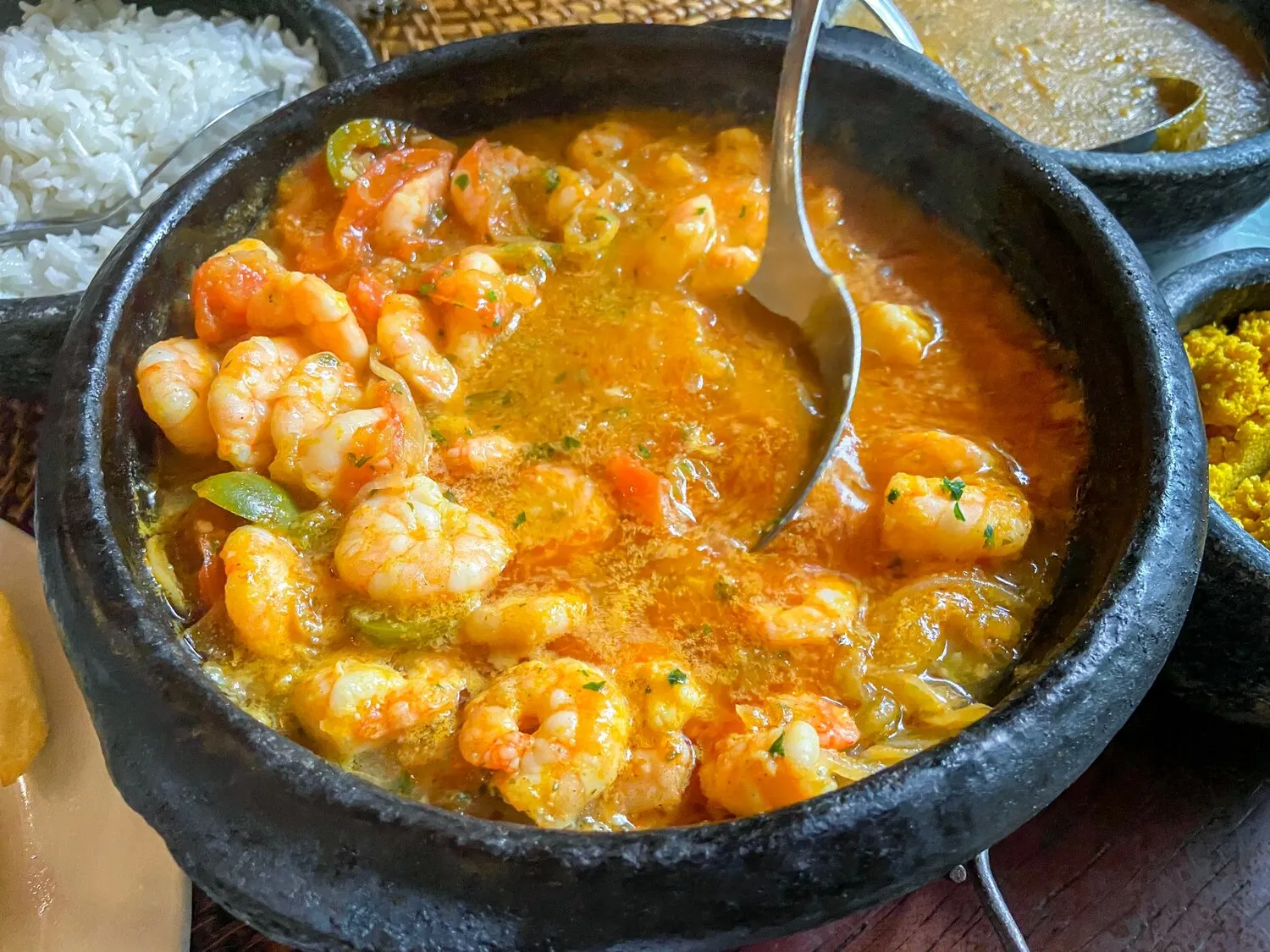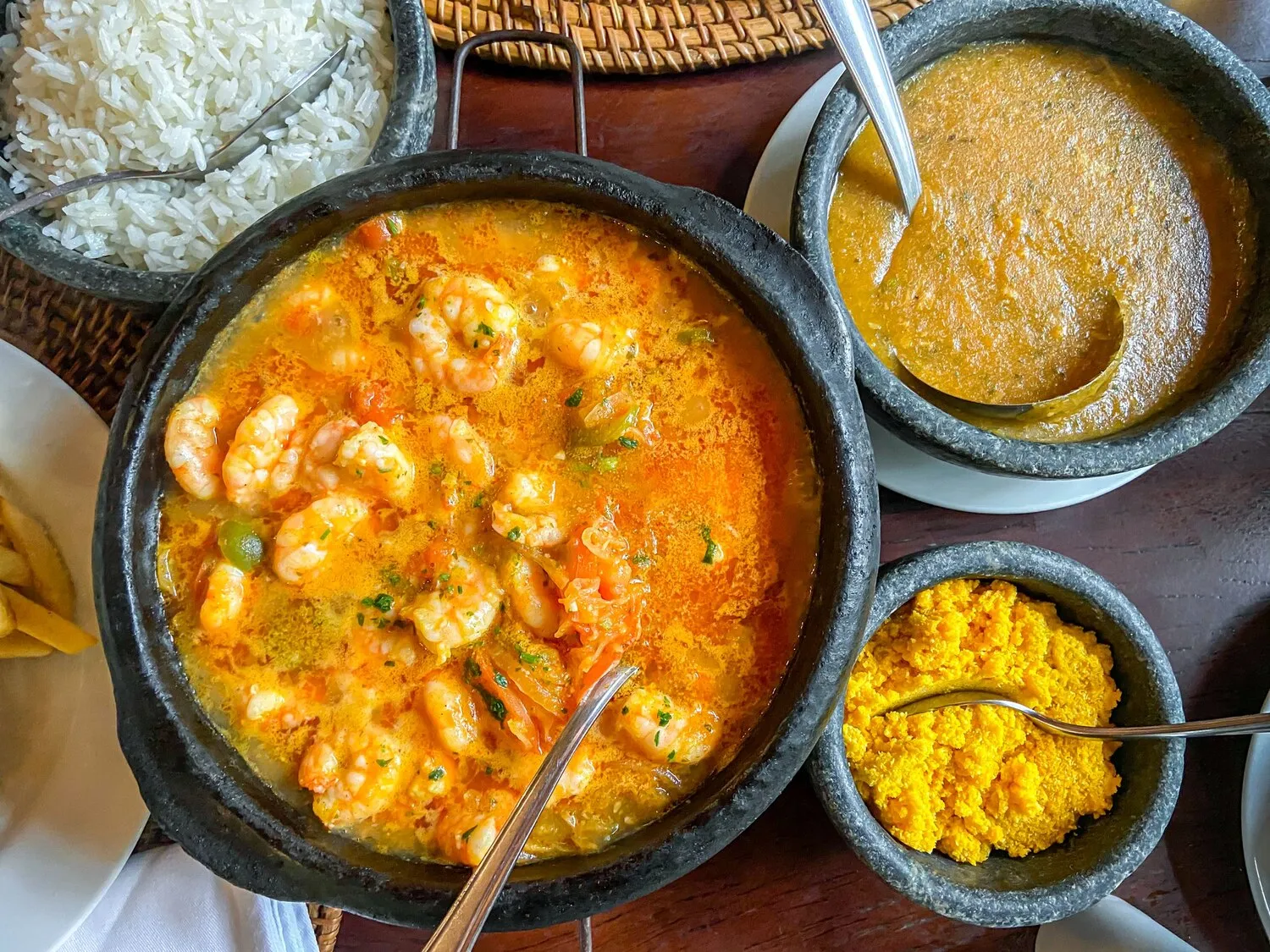
Moqueca de Camarão
Shrimp Moqueca. A traditional Brazilian seafood stew cooked in a clay pot with coconut milk, tomatoes, peppers, and cilantro.
Nutrition Facts
* The % Daily Value (DV) tells you how much a nutrient in a serving of food contributes to a daily diet. 2,000 calories a day is used for general nutrition advice.
Restaurante Du Gandolfo
Moqueca's origins are deeply rooted in Brazil's indigenous and African culinary traditions. Indigenous peoples of Brazil developed a slow-cooked seafood stew using clay pots, while enslaved Africans introduced ingredients like coconut milk and palm oil (dendê oil in Bahia), significantly shaping the dish we know today. Portuguese colonizers also contributed with tomatoes, onions, and bell peppers.
Moqueca is more than just a dish; it is a cultural icon, representing the rich culinary heritage of Brazil, particularly the coastal regions. It's a dish that brings people together, often prepared and enjoyed communally.
Regional Variations
Different regions in Brazil have their own unique versions of Moqueca. The two most famous are Moqueca Capixaba, from Espírito Santo, which uses annatto seeds (urucum) for color and flavor and doesn't traditionally include dendê oil, and Moqueca Baiana, from Bahia, which prominently features coconut milk and dendê oil. These regional variations reflect the local ingredients and culinary preferences.
Communal Dining
Moqueca is often served directly from the clay pot in which it's cooked, encouraging a shared dining experience. The communal aspect of sharing a pot of moqueca fosters a sense of community and celebration.
Celebratory Dish
Moqueca is frequently served during special occasions, such as family gatherings, festivals, and celebrations. Its rich flavors and vibrant colors make it a festive and memorable dish.
Moqueca de Camarão is a vibrant seafood stew characterized by its savory, slightly sweet, and subtly spicy flavor profile. The dish harmoniously blends the sweetness of shrimp and coconut milk with the acidity of tomatoes and the aromatic notes of peppers, onions, garlic, and cilantro.
The primary flavors include the sweet and delicate taste of fresh shrimp, complemented by the rich, creamy sweetness of coconut milk. Tomatoes contribute acidity and umami, while bell peppers add a subtle sweetness and vegetal notes. Onions and garlic provide a savory base. Cilantro provides a fresh, herbaceous aroma, and lime juice, often added at the end, brightens the overall flavor. In Bahian Moqueca, Dendê oil adds a unique earthy, slightly pungent flavor and vibrant orange color.
Fresh Ingredients are Key
Use the freshest shrimp and vegetables possible. The quality of the ingredients directly impacts the flavor of the dish.
Don't Overcook the Shrimp
Be careful not to overcook the shrimp, as they can become tough and rubbery. Cook them just until they turn pink and opaque.
Layering Flavors
Build the flavor by layering ingredients. Sauté the onions, garlic, and peppers first to develop their flavors before adding the tomatoes and coconut milk. Simmering gently allows the flavors to meld and deepen.
Using a Clay Pot
While not essential, cooking the Moqueca in a traditional clay pot enhances the flavor and presentation. The clay pot retains heat and imparts a subtle earthy flavor to the dish. If a clay pot isn't available, a heavy-bottomed pot will also work well.
Explore additional Stew dishes and restaurants
Explore StewDiscover top dining spots and culinary experiences in Sao Jose.
Explore Sao JoseLearn more about the food culture, restaurant scene, and culinary heritage of Brazil.
Explore Brazil
